As promised, here’s the whole story:
On the second day of the new year, our nanny invited us to her village for the bi-annual emptying of a communal fishpond. We piled into our trusty ’71 Crown, picked up a Japanese teacher who wanted to experience village life, and headed out deep into the rice fields. Actually, we first stopped at our nanny’s village so we could follow a pickup out to the final destination. I always carry rubber mats, wooden planks, and a shovel in the back of my car to get out of mudholes and sandy spots encountered in the back country, but with the family along for the ride it was comforting to have an escort (also, you never know when a feral Brahmin cow will decide to play cape buffalo and it’s nice to have a pickup to play decoy in such situations). The road was non-existent in places and we simply drove over drained and harvested rice fields along the paths of least resistance; I only scraped bottom once when I misjudged the far side of a steep bump. Several times, the pickup driver stopped an got out to warn me about a particularly rough patch ahead and asked if I just wanted to stop and park, but choosing the right lines is something of an obsession when I’m driving and I was lucky enough to choose correctly that day.
We eventually arrived to within walking distance (perhaps half a kilo) of the pond, which was being drained with a pump attachment hooked up to an iron buffalo (large roto-tiller or walking tractor). While waiting for the pond to drain, most of the hunters were out looking for field rats. This is where I started photo documenting the day.
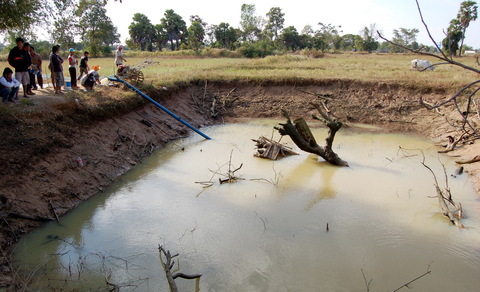
////////////////// EXTREME GNARLINESS WARNING!! ////////////////////
IF YOU HAD A HARD TIME READING THE LAST POST ON EATING RATS, GO NO FURTHER. GRAPHIC RAT BUTCHERING FOLLOWS (YUM).
The method employed for catching rice field rats on this day was simple and effective. Rats make their tunnels in berms that separate rice fields. A fire is built at the entrance of a rat hole and inside the tunnels, the rats only dig deeper to escape the smoke. Some time after, the tunnels are dug out, and the asphyxiated rats are pulled out by hand.
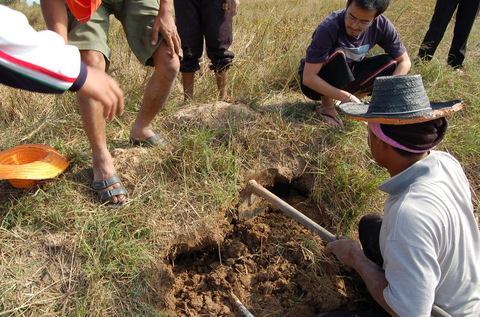
(As it turned out, most of my photos that day were of preparing the rats for eating. The actual reason why we went, draining the fishpond, I mostly recorded with a camcorder. Some of the footage is pretty interesting but I don’t have time to process it yet.)
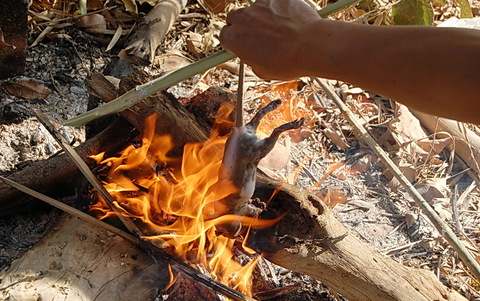
All in all, it was an extremely educational day. It’s always nice to be able to hang out with the locals and see how they really live. It’s even nicer when they are willing to show you exactly how they do what they do. On this day, we learned how to empty a fish pond, catch and cook rats, and as a bonus, I learned just how rough a road the old Crown can handle.

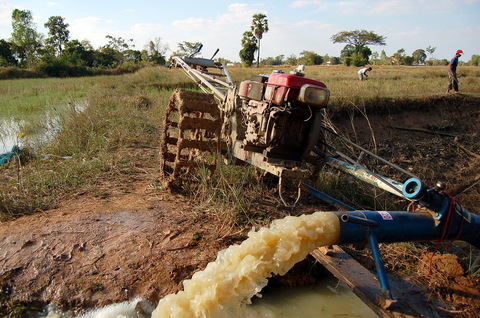
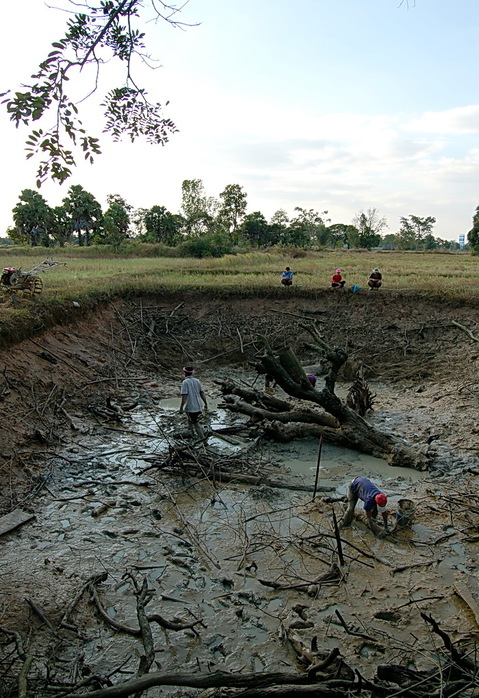
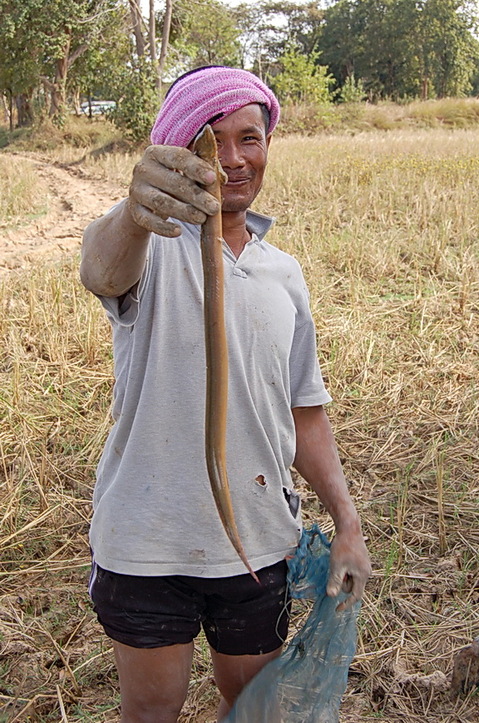
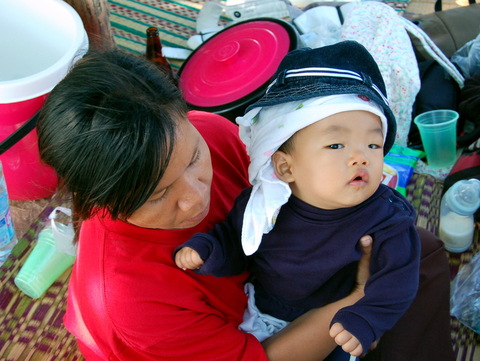
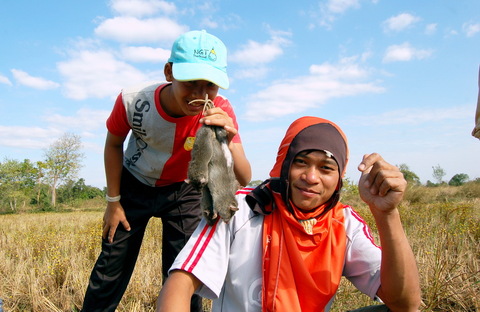
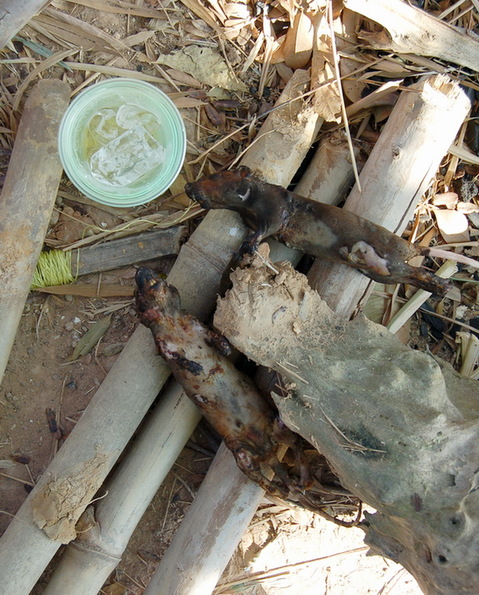
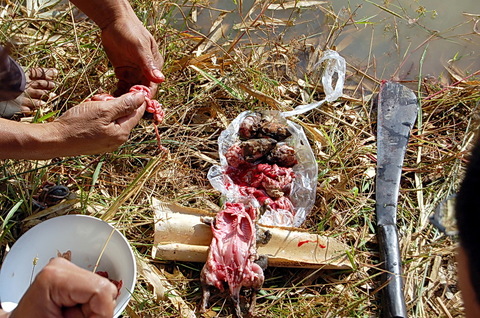
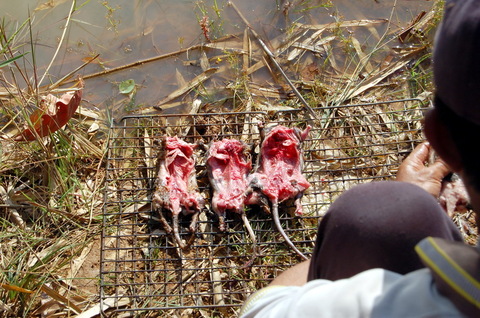
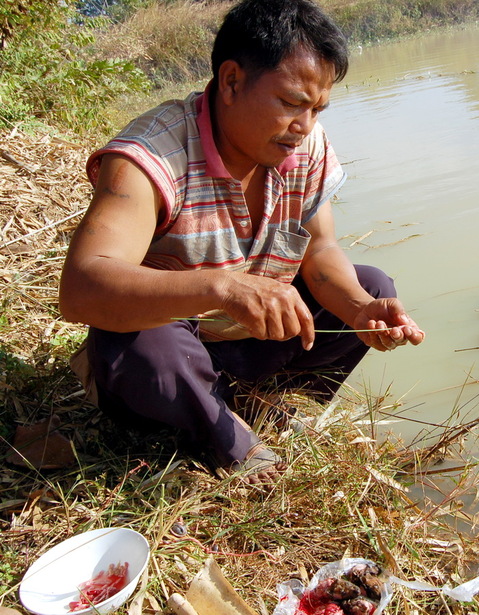

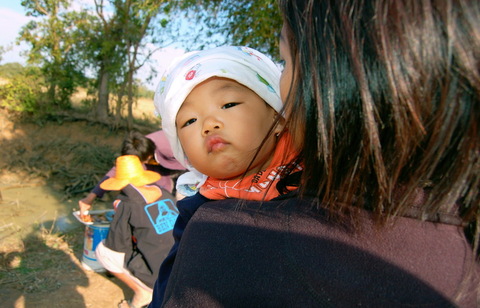
Ahhh, I missed out on all the local excitement of rat-catching, gut-cleaning and aromatic roasting! And the unagi looked so fresh!
Very educational post. All that’s missing is sniff-o-rama!
J– why do they drain the communal pond at the beginning of the year? is it something that builds up naturally but gets in the way?
It’s done mainly in order to catch the fish at their ideal size; between six and twelve months the fish are a good size but not too mature. One of the elders explained to me that it’s a survival of the fittest thing as well, because the wiliest fish and eels burrow deep in the mud, under rocks and roots and can get away from the people probing above. This keeps the gene pools of the various species strong.
What species of fish are in that pond? Did you eat any? Are they yummy? Are there parasitic snails to worry about, like those pesky liver flukes which are supposedly the number one cause of food-related deaths? Did you actually eat rat guts? Does it taste like chicken?…guts?
> What species of fish are in that pond?
Several subspecies of carp, eel, snakehead, catfish, and others.
> Did you eat any?
Yes.
> Are they yummy?
Yes.
> Are there parasitic snails…
Don’t know.
> Did you actually eat rat guts?
Not that day, but I had before.
> Does it taste like chicken?…guts?
Here is the deal with guts of any kind: If they are cleaned well and fresh, they generally taste okay. If not, they taste like the word “offal” sounds.
Thank you for inviting me. i enjoyed so much.
and thank you for delicious dinner yesterday evening, too. i love it. i drank deeply. today work was so difficult.
This post was so cool! Thanks for taking the time to post it! btw max looks so different with teeth! lol